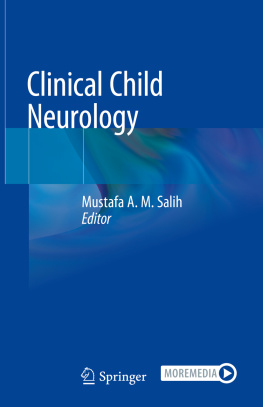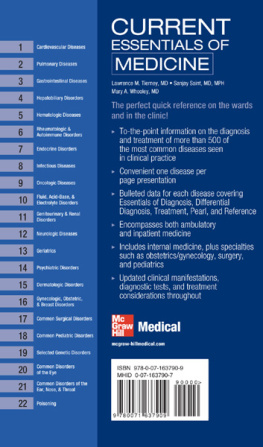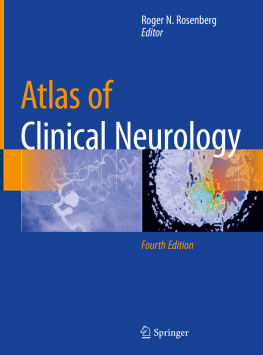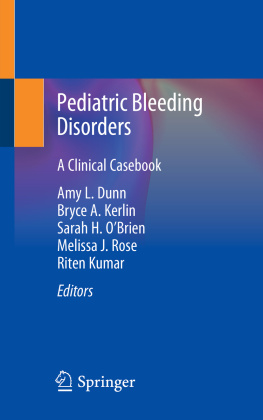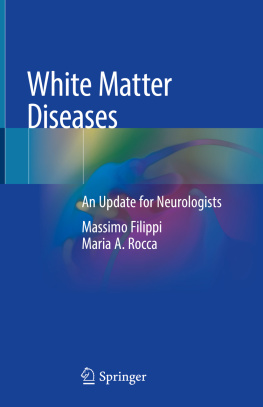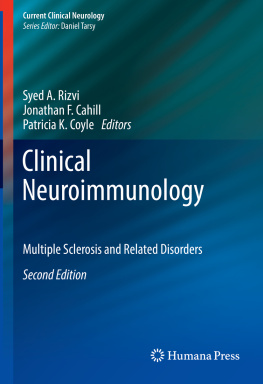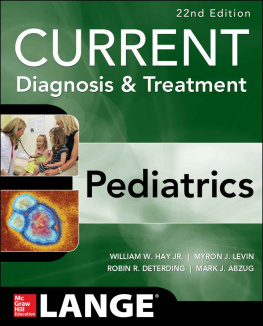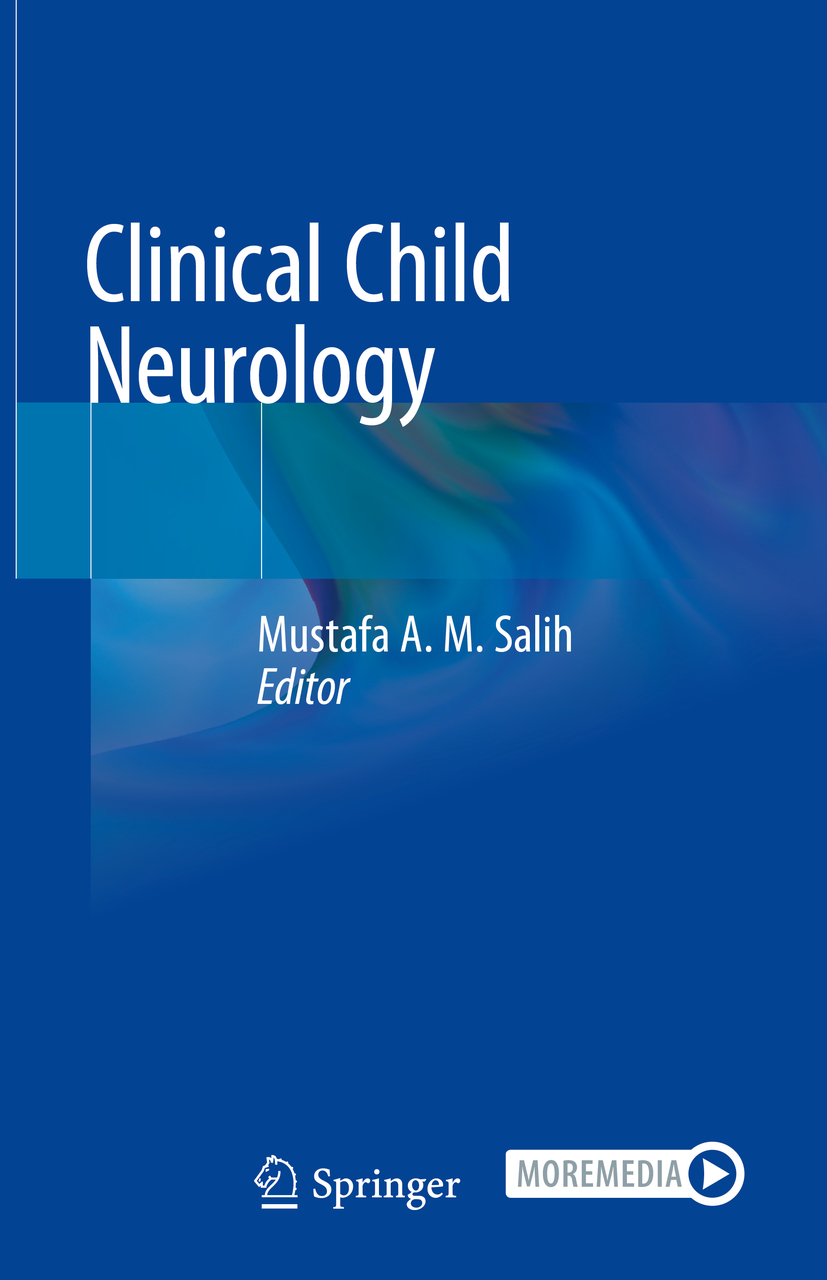Editor
Mustafa A. M. Salih
Clinical Child Neurology
Editor
Mustafa A. M. Salih
College of Medicine Division of Pediatric Neurology, King Saud University, Riyadh, Saudi Arabia
ISBN 978-3-319-43152-9 e-ISBN 978-3-319-43153-6
https://doi.org/10.1007/978-3-319-43153-6
Springer Nature Switzerland AG 2020
This work is subject to copyright. All rights are reserved by the Publisher, whether the whole or part of the material is concerned, specifically the rights of translation, reprinting, reuse of illustrations, recitation, broadcasting, reproduction on microfilms or in any other physical way, and transmission or information storage and retrieval, electronic adaptation, computer software, or by similar or dissimilar methodology now known or hereafter developed.
The use of general descriptive names, registered names, trademarks, service marks, etc. in this publication does not imply, even in the absence of a specific statement, that such names are exempt from the relevant protective laws and regulations and therefore free for general use.
The publisher, the authors and the editors are safe to assume that the advice and information in this book are believed to be true and accurate at the date of publication. Neither the publisher nor the authors or the editors give a warranty, expressed or implied, with respect to the material contained herein or for any errors or omissions that may have been made. The publisher remains neutral with regard to jurisdictional claims in published maps and institutional affiliations.
This Springer imprint is published by the registered company Springer Nature Switzerland AG
The registered company address is: Gewerbestrasse 11, 6330 Cham, Switzerland
Between the nation in history and the individual, the family is the primary tie. Dag Hammarskjld
In memory of my motherNooraand fatherAbdalla,
to my wifeNadia,
and childrenNoora, Leena, and Lubna
Preface
Accompanying the recent rapid progress in pediatric neurosciences, including molecular biology and powerful genomic tools, the need for accurate clinical diagnosis became more apparent. Genetic variants encountered in genomic assays may not be properly interpreted without the guidance of an accurate description of the phenotype. This requires the skills that are necessary to conduct a proper neurological assessment which should be tailored to the problem suggested by an accurately taken history. Such an approach helps to guide pertinent laboratory and imaging investigations and to avoid unnecessary testing. It may also highlight the extent and prognosis of many disorders and pave the way for simplistic algorithmic approach, which can be used for proper management. This is currently of special importance, given the wide gap between the developed and resource-poor countries regarding the available facilities for diagnosis and medical intervention.
This book, which aspires to hold global appeal, adopts a problem-based approach to childhood disorders of the nervous system with the aim of supporting practicing child neurologists, pediatricians, and residents in training in their management of children with neurological disorders. The various pediatric neurologic diseases and organ systems are covered by pediatric neurologists and scientists from leading university hospitals and health centers in both the developed and the developing world. In addition to the full range of more frequent disorders, the book spans the neurological aspects of neglected tropical diseases and neurogenetic diagnostic and management algorithms utilizing the power of emerging DNA technology. An additional feature is the inclusion of didactic videos relating to various neurologic disorders including epilepsy and movement disorders.
I would like to express my sincere gratitude to the distinguished group of authors and co-authors of the individual chapters, from four continents, who welcomed and supported the initiative of this book and graciously offered their valuable time, skills, and knowledge despite their pressing clinical commitments.
I would also like to convey my indebtedness to my enlightening and aspiring teachers at the Faculty of Medicine, University of Khartoum, Sudan, who guided me throughout the undergraduate years and postgraduate course in pediatrics. The late Professor Daoud Mustafa Khalid (19172008) will always be remembered as an outstanding neurologist, teacher, and mentor. In the United Kingdom, I had the great privilege of having the late Dr. David Gardner-Medwin (19362014), one of the founder fathers of child neurology, as my mentor; and to be trained at the Regional Neurological Centre in Newcastle upon Tyne, headed by the legendary Lord Walton of Detchant (19222016) [ https://www.ncbi.nlm.nih.gov/pmc/articles/PMC4949866/pdf/sjp-15-79.pdf ]. I also had another privilege (in 1984 at Uppsala University, Sweden) of fellowship training period with the late Prof. Ingrid Gamstorp (19242007) [ http://www.whonamedit.com/doctor.cfm/3363.html ], one of the founder mothers of child neurology; and Prof. Erik Stlberg, the pioneer clinical neurophysiologist and founder of the single-fiber EMG technique [ https://worldneurologyonline.com/issue/september-2016/ ].
Finally, I would also like to express my gratitude to Springer Nature and in particular to Sylvana Freyberg, Ph.D., Springer Clinical Medicine Editor, and to Madona Samuel, Project Coordinator, for their invaluable support and continued dedicated help which made this book a reality.
Mustafa A. M. Salih
Riyadh, Saudi Arabia
Acknowledgments
I would like to express my appreciation and thanks to the late Dr. Awad H. Mahdi (Division of Pediatric Neurology, College of Medicine, King Saud University, Riyadh, KSU), Professor Thomas M. Bosley (the Knights Templar Eye Foundation Professor of Ophthalmology at the Wilmer Eye Institute of Johns Hopkins University, USA), Dr. M. Zain Seidahmed (Department of Pediatrics, Security Forces Hospital, Riyadh, KSA), Dr. Mohammad M. Kabiraj (Division of Clinical Neurophysiology, Department of Neuroscience, Prince Sultan Medical City, Riyadh, KSA), Dr. Sayed M. Ahmed (Division of Pediatric Neurology, Dhahran Military Hospital, Saudi Arabia), Dr. Ahlam A. Hamed and Dr. Maha Abelmoneim Elseed (Department of Paediatrics and Child Health, Faculty of Medicine, University of Khartoum, Sudan), Dr. Hamdy H. Hassan (Radiology and Medical Imaging Department, College of Medicine, King Saud University, Riyadh, KSU), Dr. Hisham Alkhalidi (Department of Pathology, College of Medicine, King Saud University, Riyadh, KSU), and Dr. Awadalla Hassan Sidahmed, Sudan, for kindly providing the slides detailed in the figure legends. I would also acknowledge with gratitude the kind and generous help of the late Dr. Abdulrahman M. Ellider, Radiology Department of Khartoum Teaching Hospital, who arranged for and interpreted several of the early images. Thanks are also due to Babiker Faragab, El Hag Abbas, and Mustafa Abellatif (Medical Illustration Unit, Faculty of Medicine, University of Khartoum, Sudan), and Vir Salvador for medical illustration; and to Loida M. Sese for secretarial assistance.

